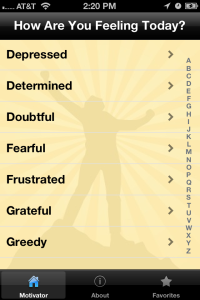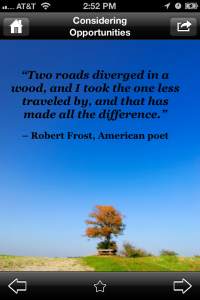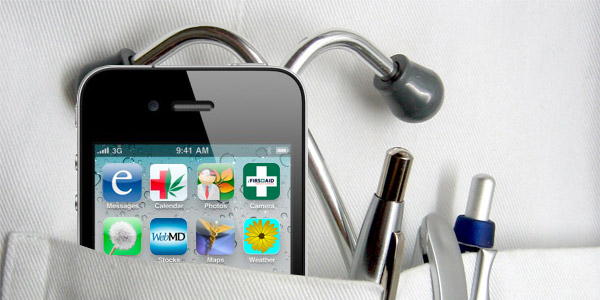
There wasn’t a bigger and more exciting year in Mobile (in my humble opinion) then 2010. With Apple leading the pack and Android closely on it’s tail, its been an exciting time to stay in tune with the mobile world and see some exciting shifts in technology.
2010 was full of new trends that have changed the mobile landscape forever. Below is a list of some of the most notable mobile trends of the year. Take a look, and feel free to let me know what you think are the top trends of 2010! I’ll be following this post with a look at the top apps of the year so check back soon.
Native apps vs. web

2010 was definitely the year of the app. With the release of the iPhone 4, the iPad, and Android’s steady rise to the top, it seems like everyone is in the app business (including yours truly), and with the move towards everything mobile, it’s a nice spot to be in.
The question is, should companies be developing native applications or simply optimizing their current web presence for mobile? I think it all comes down to what kind of business you’re in. As a marketer, as well as a consumer, I want VALUE when I download an application. If I’m looking to connect with a company’s brand via a mobile app I want features that will keep me interested in the application. Whether it’s the ability to order food, play a game, create and share photos, make purchases, the list goes on and on. Ask yourself, “what value am I providing my customers via an application”?
I do believe every company needs to be mobile ready, but I don’t believe every company needs an app. If you are simply re-creating your website just to say you have an app, then maybe you should invest those dollars in optimizing your own mobile website. People are browsing the internet more then ever, so make sure you evaluate your current mobile presence, your company goals, and how you can utilize the current technology to create the best experience for your customers.
Location Based Services

My Facebook wall has been filled with check-ins and status updates from all over the US with friends letting me know where they’re at and what they’re up to. Location based services isn’t a new technology, but the advances in mobile has created a brand new experience for today’s consumer.
With company’s like Foursquare, Facebook, and Yelp taking the lead, consumers can find local deals, restaurant reviews, events, and info about the businesses in their city. 2011 will introduce a host of new improvements and features that I think will continue to revolutionize the way people share their lives.
Sensor technology and augmented reality are just a few ways that will enhance how people utilize location based services. I think we will also be seeing a lot more rewards via coupons and deals for people who check-in on a regular basis. What do you think will be the next trend in location based services?
The Internet of Things

With the introduction of Smartphones we are becoming more connected then ever and new advances in technology are bringing aspects of our everyday life straight to our finger tips.
From 4G technology to QR codes, the mobile commerce landscape is looking to explode over the next few years with the help of mobile devices:
- According to a research study conducted by ABI Research, consumers are expected to spend $119 billion by 2015 through their mobile devices, globally. This makes up about 8% of all e-commerce activity.
- According to Juniper Research, mobile payments around the world are expected to quadruple from $170 billion in 2010 to $630 billion in 2014.
Native Smartphone features are also contributing to the way we connect and communicate. For example, the iPhone’s built-in accelerometer allows us to adjust the way we view objects online and allow for better game control. The iPhone’s sensor technology includes noise, proximity, and light sensors that continue to enhance our mobile experience.
As developers continue to explore the world of mobile and technology available, I predict we’ll see some pretty amazing apps and features in 2011.
4G Wireless Networks

As more people get connected, the next obvious step would be to provide a quicker, more efficient network. With quicker speeds on your mobile device, and the rise of the tablet, I’m sure we’ll see a dive in desktop and laptop sales to in 2011.
Carries like Sprint have already rolled out their 4G networks in select areas with Verizon and AT&T looking to roll out their version of 4G, Long Term Evolution (LTE), by mid-2011. Faster networks will definitely bring on a slew of new phones available in the next year as well as enhanced features and an even closer connective experience.
Android

Last but certainly not least is Android. Apple charged onto the scene with the iPhone, then followed it up with the even more impressive iPhone 4, but this year didn’t belong to Apple.
With some impressive Smartphones, including the Samsung Galaxy S, T-Mobile G2, HTC Droid Incredible, and Motorola Droid X (just to name a few), it’s not surprising that Android has surpassed Apple in market share. With a host of tablets coming out soon they’re numbers are only sure to rise over the next year.
To top off an already impressive year, the Android Market has officially surpassed 200,000 applications. Just two months ago the app store passed the 100k mark. Android has yet to dethrone the Apple App Store and their selection of over 300,000 apps, but with their recent dominance in the market and a promising line of additional products, I have no doubt Android will continue to break records and evolve in 2011.
What are your thoughts? Let me know in the comments field below.
The “Internet of Thing” photograph comes courtesy of Flickr Photostream: lynetter












